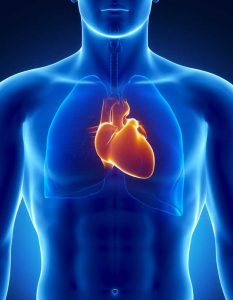What Is Deep Belly Fat
While we don’t like the fat on our thighs or our butts, it is much less of a risk factor when compared to belly fat. Belly fat includes visceral fat, which is different than subcutaneous fat, stored right below the skin. Visceral fat is stored deep in the belly and surrounds vital organs like the stomach, liver, pancreas, and intestines. It is known as “active fat” because it can produce hormones and other substances in the body. Visceral fat enters the bloodstream more easily than other fats, given its location in the body. While a small amount of this fat is necessary to protect your organs, a very large mid-section, usually means visceral fat is excessive.
Excessive visceral fat is dangerous and has been linked to:
- Heart disease
- Stroke
- Alzheimer’s
- Hypertension
- Cancer
- Type 2 diabetes
Visceral fat is about 10% of your total body fat. While it is a small amount of your total fat, it is increasingly proving to be an important factor when it comes to health outcomes.
To get a very accurate measure of visceral fat, expensive body image scans are required. A more accessible test is the waist measurement. Men should target a waist circumference of 40 inches or less, and women 35 inches or less. Hold a tape measure at your belly button and wrap it around the body at this level. Keep the tape measure taut, but not tight, and don’t suck in your tummy. Work to get your waist circumference under these guidelines.
Storing fat in your upper body, more of the apple-shaped body means more visceral fat, and a higher risk for poor health outcomes. Men are more prone to this type of body. The pear shape, where fat is stored in the lower body, is less of a risk factor, and more commonly found in women’s bodies. This could be one of the reasons women generally live longer than men.
The good news is you can reduce the amount of visceral fat within a few months, with improvements to your diet and exercise. Visceral fat is easier to lose than subcutaneous fat. There is no magic pill! Improving your diet and adding more exercise will help you lose weight, reduce your belly and visceral fat, and improve your health and risk for illness and disease.
How To Reduce Deep Belly Fat
- Improve your Diet

- Focus on smaller portions.
- Limit saturated fat that is found mostly in animal products.
- Focus on complex carbohydrates -fruits, veggies, and whole grains.
- Rely on lean proteins like chicken, fish, and beans.
- Reduce or eliminate highly processed foods that are high in fat, sugar, and sodium.
- Limit your alcohol intake.
- Add more Exercise

- Include at least 30-60 minutes of daily cardiovascular exercise like walking, biking, swimming, or even dancing.
- Strength train for 15-30 minutes, 2-3 times a week working the upper body, lower body, and core muscles.
Pay attention to belly fat and work to reduce it with improvements to diet and adding exercise. The muffin top, love handles, and pot belly are no laughing matter when it comes to health. Less fat in the middle of your body means better health and longer life.
By: Christy Coughlin, Wellness Coach
